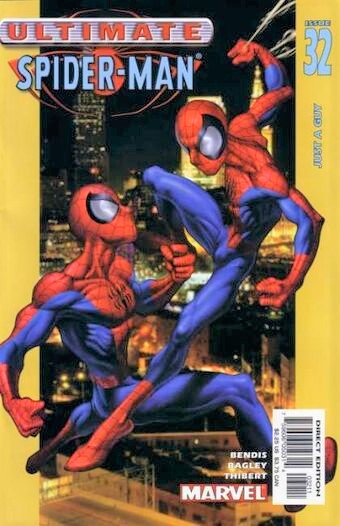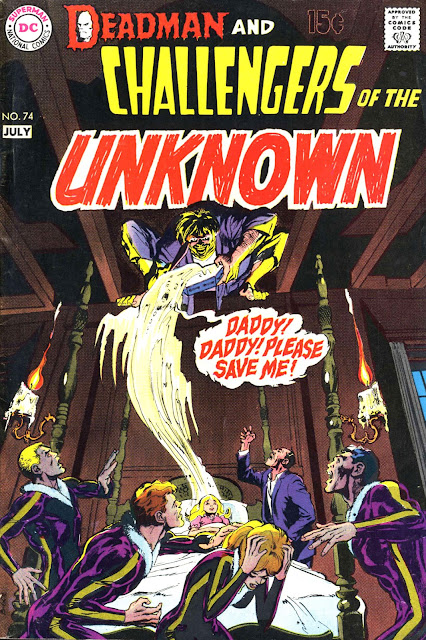Dec 10th 2020 Advent Calendar
A bearded man in a torn Superman outfit rages from inside a tiny cage--
Outside the cage stands another man in a Superman outfit, his cape catching the wind as the bearded angry man fixes him with a piercing accusatory stare--
The second man is Superman. The bearded imposter confirms this by the way headdresses him. He asks the Man of Steel to be set free-- or executed. Superman delivers his response--
Today's Advent Calendar cover is SUPERMAN #225, illustrated by Curt Swain and Murph Anderson. Like all good covers it sets out to pose more questions than give straightforward answers. Who is the man in the cage? Why is he dressed as Superman? Why has Superman imprisoned him? Why does he look so badly cared for? And why does Superman agree to kill him???
I do feel unfortunately that the impact of this great cover is diminished somewhat by the decision to include on the cover the story's title THE SECRET OF THE SUPERMAN IMPOSTER. Knowing from the outset that the bearded guy is an imposter actually answers questions instead of posing them-- we now know he is someone who is only dressing as Superman, pretending to be him. The possibilities that he might be the real Superman, or Superman's clone/twin, or an alternative reality version are all now dismissed, undermining the mystery somewhat. But I can forgive that since as I say, it's such a nice image. Besides which this story from 1970 isn't the first time the Man of Steel met an imposter. In 1966 THE CASE OF THE SUPERMAN IMPOSTER appeared, and I imagine the title of the later story is intended to be a reference to this, although the imposters in these stories are not actually the same. Again it's a lovely cover image with the reader-baiting spectacle of Supergirl appearing to whack Superman clean on the jaw. Again, though, the title and speech bubble give the game away somewhat.
1959's THE SUPER-OUTLAW FROM KRYPTON featured an imposter whose powers rival Superman's own, being an extra-terrestrial himself. His blond hair and aggressive tone should have reassured readers that this guy was decidedly different from the genuine Man of Steel, but his identical costume and display of strength would have piqued sufficient interest to wonder what on earth was going on.
The idea of the protagonist meeting their double or doppelganger is a well-established story idea, and one which in the 60s and 70s especially seemed to be a very popular narrative stand-by for writers of long-running TV shows in particular. I recall examples from STAR TREK, THE SIX MILLION DOLLAR MAN, DOCTOR WHO and countless others. Perhaps the best example was in the SCHIZOID MAN episode of THE PRISONER.
In comics too there seem to be plenty of great examples of the main character meeting their double, and almost always being in conflict with them whether they're a straight imposter, a robot copy, a person from another reality or just a coincidental double. And I know that in DC's continuity there are complicated reasons for there being alternate versions of most characters, so the covers I have chosen are simply selected for their impact on a casual reader. Like this one from 1958 which appears to have WONDER WOMAN locked in combat with her double. The story reveals the truth to be less of an intrigue, but the cover succeeds spectacularly in establishing the mystery. And just check out that leg-lock Diana has her rival in!
Here's the first appearance of Guy Gardner in 1968, towering impressively over a defeated Hal Jordan and holding the lantern aloft. Despite his obvious different facial appearance, this seeming imposter's assertion that he is the real Green Lantern, his costume and his apparent dominance over Hal would surely have tempted casual buyers eager to learn more.
Over the years Batman has encountered his double more times I would wager than any other superhero. During the Golden and Silver Age it seems like almost every month he and Robin encountered an imposter of some kind across the various titles in which the characters were appearing. I was quite struck by the cover of this issue from 1951. It works so well because the reader is put in the position of Robin in not being able to discern which is the genuine Batman, As with the GREEN LANTERN and WONDER WOMAN covers there is no suggestion here that the counterfeit Batman does not share the real one's abilities.
And this cover from 1957 presents to the reader the added attraction of Batman himself being uncertain if he is the true version or the imposter-- or is it the other way round?
Then things were taken a stage further in 1965 when "the prize puzzler of the year" was that there were now three Batmen, including a giant and a miniature version--
1986 was the year I first discovered American comics, and BATMAN was one of the titles I bought regularly. I love the cover of the following BATMAN comic-- it has the raw aggression and energy I was used to seeing in British comics such as 2000AD or BATTLE. This time a far more brutal confrontation is depicted than any of the above examples, despite the issue still being awarded the Comic Code Authority's seal of approval. Clearly one of the Batmen has the upper hand in this fight, but is it the real one or the imposter? And does the discarded bottle hold a clue as to what's going on? To be honest I can't remember anything about the story itself, but the fact that the cover image is sufficiently engrained on my memory is testament to the visual impact created by artists Jim Starlin and Anthony Tollin.
This cover from 1984 seemingly has two Supergirls as one seems to be swooping in to thwart the other. WHO STOLE SUPERGIRL'S LIFE? the caption asks cryptically, a great example of a question being used to deepen the mystery and engage the potential reader.
And this is a lovely cover image from the original SWAMP THING series, showing an intriguing battle between two identical creatures, Swampie himself and THE MIRROR MONSTER. It's another great dynamic image, and as with the BATMAN cover above, the seemingly dominant creature is going for the other's throat. Perhaps there's a clue in the covers that the one with the apparent upper hand is the more amoral?
Finally there's this cover from 2003's ULTIMATE SPIDER-MAN #32. Again this is an image in which there is no obvious discernible difference between the two Spider-men and it proves that the doppelganger comic cover can still pose more questions than it answers in fairly modern comics.
For Day 9 click here--


















Comments
Post a Comment